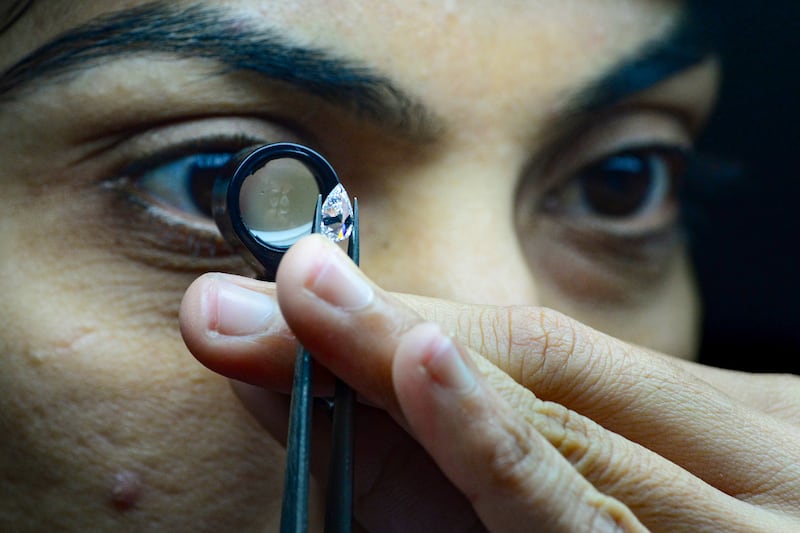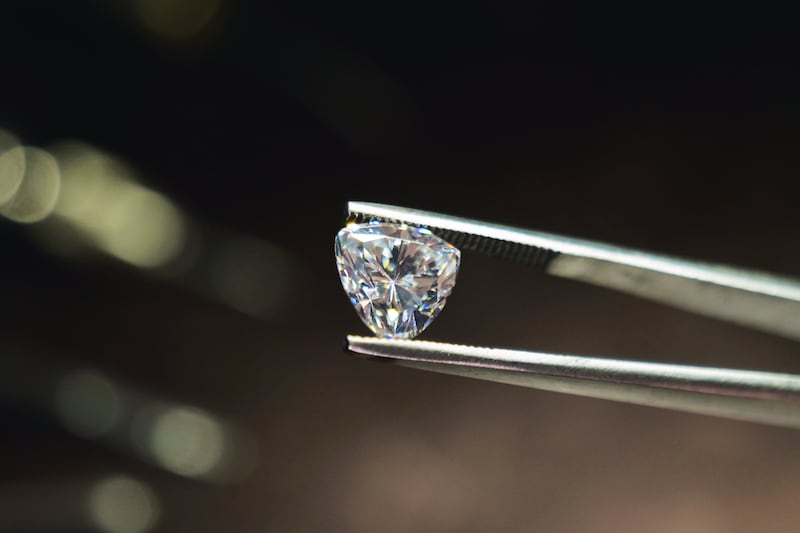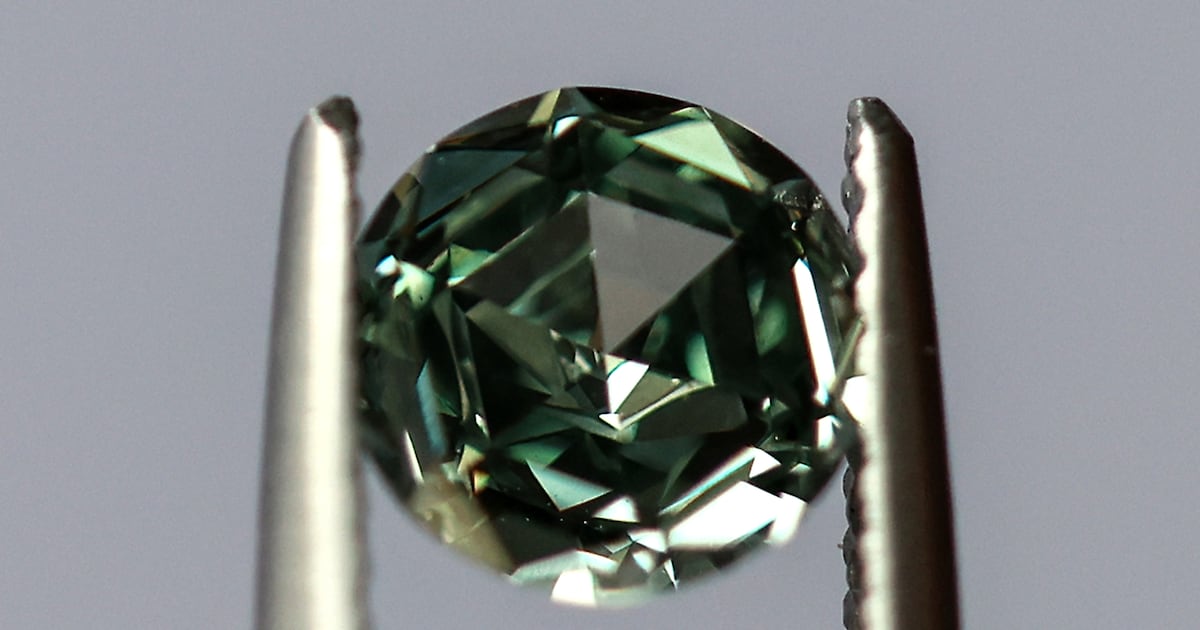Lab-grown or natural? This is the question facing many putative diamond buyers.
For many, the choice comes down to cost. After all, some would say that a lab-grown diamond can be just as beautiful as its mined equivalent.
However, as the supply of lab-grown diamonds increases, the price differential between the two continues to widen. This can cause some challenges, given just how difficult it is to tell them apart.
Chemically the same, it takes an expert insight to work out which is which – so what might look the same can have a vastly different valuation.
So how do you get your diamonds valued and, when buying, what precautions you need to take as every valuer has tales of people thinking they were buying real diamonds, only to discover to their horror the actual value is way off what they paid.
Globally, researcher Paul Zimnisky estimates lab grown diamonds now make up about 20 per cent of the total diamond market. China is the big producer, accounting for almost half of all production, followed by India, the US, Singapore and Russia.
So who is the typical lab grown buyer? Everyone, says Chris Andrews, managing director at Weirs. “There’s no particular marketing segment.”
Some jewellers, such as Tiffanys, Van Cleef & Arpels and Bulgari, have opted not to sell lab-grown, but Weirs has taken a different view and it is now a growing part of the business.
[ Colour, clarity, and carat: The ingredients of a high-quality diamondOpens in new window ]
“It’s up to the customer to make the choice,” says Andrews. And, as lab-grown are far more affordable than their natural equivalents, “it brings new faces into the store”.
 This photograph taken on February 6, 2024 shows employees working at Greenlab Diamonds, a firm manufacturing lab-grown gems on the outskirts of Surat. Man-made gems are reshaping the $89 billion global diamond jewellery market, especially in the west Indian city of Surat where 90 percent of the world’s diamonds are cut and polished. Lab-grown diamond exports from India tripled in value between 2019 and 2022, while export volumes rose by 25 percent between April and October 2023, up from 15 percent in the same period a year earlier, according to the latest industry data. (Photo by Sam PANTHAKY / AFP) / To go with ‘INDIA-ECONOMY-DIAMOND’ FOCUS by Anuj SRIVAS (Photo by SAM PANTHAKY/AFP via Getty Images)
This photograph taken on February 6, 2024 shows employees working at Greenlab Diamonds, a firm manufacturing lab-grown gems on the outskirts of Surat. Man-made gems are reshaping the $89 billion global diamond jewellery market, especially in the west Indian city of Surat where 90 percent of the world’s diamonds are cut and polished. Lab-grown diamond exports from India tripled in value between 2019 and 2022, while export volumes rose by 25 percent between April and October 2023, up from 15 percent in the same period a year earlier, according to the latest industry data. (Photo by Sam PANTHAKY / AFP) / To go with ‘INDIA-ECONOMY-DIAMOND’ FOCUS by Anuj SRIVAS (Photo by SAM PANTHAKY/AFP via Getty Images)
For some buyers, opting for a lab diamond also means that they can sidestep the negative connotations associated with natural diamonds, such as mining and “blood diamonds”.
However, it is worth noting that it has been estimated that it takes about 250-750kWh of electricity to produce one polished lab carat, on average. At the upper end, that puts it on a par with running a typical US household for a month. So there also environmental issues on this front.
The difference
Chemically, lab-grown and natural diamonds are the same. This means telling the difference is not straight forward.
When I was shown a three carat lab-grown diamond at Weirs (sale price €2,830) and a 0.8 carat natural diamond (€6,835), it was clear that, while the price might vary significantly, it is incredibly difficult to tell them apart.
Perfection and size perhaps, is one clue – after all, most people couldn’t afford a three carat natural diamond – but people are increasingly opting for “flawed” lab-grown diamonds to make them look more real.
 One impact of the changing market dynamics for lab-grown diamonds is the downward pressure it is putting on the value of naturally mined diamonds. Photograph: Getty Images
One impact of the changing market dynamics for lab-grown diamonds is the downward pressure it is putting on the value of naturally mined diamonds. Photograph: Getty Images
“You can’t tell with the naked eye,” says Andrews, tough he adds that some “really bad lab-grown” diamonds can be identified with the use of a magnifying tool.
Such is the challenge that many jewellers have now stopped offering the service.
Rocks, for example, which has outlets on Grafton Street and Stillorgan, says it no longer offers valuations, due to the difficulty in distinguishing between lab-grown and natural diamonds. ESL on Chatham Street takes a similar view.
For those who continue to offer valuations, the answer is a more rigorous valuation process.
“Trust is really important in our industry. For us, it’s really important to be able to stand over everything we do and test everything, and that’s how it should be,” says Andrews. “We have invested in it [valuations]. It’s really important to be able to tell the difference.”
The store now uses specially purchased testing machines on a regular basis.
Carol Clarke has been on Dublin’s Royal Hibernian Way for almost 40 years. The only Irish-based fellow of the Institute of Registered Jewellery Valuers in London, she is regularly called on for tricky valuations.
Clarke has expensive screening equipment to assist her but even this isn’t always accurate.
“You can get conflicting reports from a lot of the screeners,” she says. For a second opinion, Clarke would send an item to the Gemological Institute of America, an independent non-profit, which uses a spectroscope to confirm her finding.
You can expect to pay about €144 for a valuation at Weir’s, and about €50 per subsequent item. With Clarke, you’ll pay about €100 for a valuation, but if you have a number of items the cost per item falls. A subsequent valuation of the same item will be about €35.
Value
Of course, natural or lab-grown wouldn’t matter so much, if they were both of the same value. And this is how it almost started out.
Back in 2015, for example, a $6,000 (€5,190) budget would have got you a one carat diamond ring – either lab-grown or natural, according to Paul Zimnisky Diamond Analytics.
Now, you might still only get a natural one carat ring for that price but you’ll get a five carat lab grown one for the same price, illustrating how prices have bifurcated.
 In the case of a lab-grown diamond ring, that the value of the band might be more than the actual stone. Photograph: Getty Images
In the case of a lab-grown diamond ring, that the value of the band might be more than the actual stone. Photograph: Getty Images
Back in 2020, a flawless three-carat lab-grown diamond was selling for about $28,900, or about half of the value of a natural diamond. Fast forward to this year, and its value has dropped to less than $4,000.
“They’ve lost an awful lot of money in that time,” says Clarke, of lab diamonds. The main reason is a boom in supply, with tens of millions of lab-grown diamonds now being produced every year.
Experts suggest the widening price gap will remain a feature of the market. Commodities trading firm, Diamond Standard, recently predicted a further drop of about 50 – 90 per cent in the price of lab grown diamonds, while Clarke suggests that lab-grown diamonds could eventually find a plateau around the same price level as cubic zirconia.
Andrews is more sanguine.
“I don’t believe it’ll drop much further,” he says, noting that there are certain costs associated with lab-grown diamonds, such as certification, that are fixed.
“And you’ve still got to set the stone,” he says, adding that good craftsmanship will always cost.
One impact of the changing market dynamics for lab-grown diamonds is the downward pressure it is putting on the value of naturally mined diamonds. On average, the value of diamonds has dropped by about 30 per cent since 2022.
A diamond ring that was worth about €40,000 back in 2023 will now only be worth about €29,600, says Clarke.
At the same time, gold has soared. This means, in the case of a lab-grown diamond ring, that the value of the band might be more than the actual stone.
Buyer beware
For consumers then, it is important to be clear about what you’re buying when you buy.
Some might suggest using a diamond and moissanite tester pen, which can be bought for as little as €10 on a site like Temu or Amazon, and promises to “effectively distinguish between genuine diamonds, other gemstones and synthetic diamonds”.
Nonsense, says Clarke.
Customers of Empress Fine Jewels off Grafton Street discovered this to their horror recently, when it was reported that some customers had paid significant amounts for diamonds that turned out to be fake – even though they came with valuation reports.
“I had a lot of people here upset and crying,” Clarke says.
If you’re travelling to buy diamonds, Clarke warns buyers to be prepared in cities like Antwerp, New York and Dubai – popular destinations with Irish buyers – where fraud can be common.
“There is huge scope for fraud and it happens all the time,” she says.
 Chemically the same, it takes an expert insight to work out which is a lab-grown diamond and which is a natural diamond. Photograph: Getty Images/ iStockphoto
Chemically the same, it takes an expert insight to work out which is a lab-grown diamond and which is a natural diamond. Photograph: Getty Images/ iStockphoto
Your diamond might come with GIA certification but it might be lab-grown with a fake certificate warns Clarke. This means that the ultimate value is likely a fraction of what you might have paid for it.
“I’d strongly advise never to pay cash in any of these countries, no matter what discount they’re giving you. Use a credit card – and you have to get it [the diamond] checked the minute you come back”.
Has she had to tell people that their jewellery wasn’t worth what they paid for it?
“All the time”.
One couple who had bought a ring in Antwerp three years ago brought it in when their insurer wanted it valued. But she saw it was fracture-filled – or a diamond filled in with glue to hold it together. This is something which should have been disclosed when the diamond was sold.
They had a nice cert for the diamond, and had paid about €8,000 for it. But Clarke could only value it at about €1,500.
She has seen tennis bracelets, where half the diamonds will be lab-grown, and she’s also had instances of people coming back from Antwerp with rings which weren’t even lab-grown, but were moissanite, a mineral composed of silicon carbide, which can be more vulnerable to scratches and damage.
And just because something looks old, doesn’t mean it’s authentic.
“Antique jewellery can all be faked,” she says, adding that lab grown diamonds can be cut just the way they were 150 years ago.
So, tread carefully even when buying at auction. Clarke says she has customers who come in after buying at auction to check the veracity of what they have just bought.

